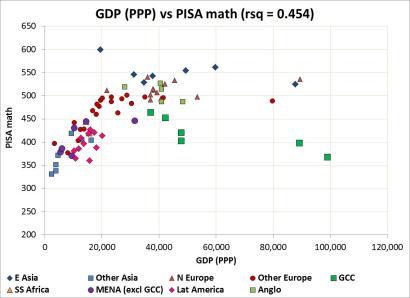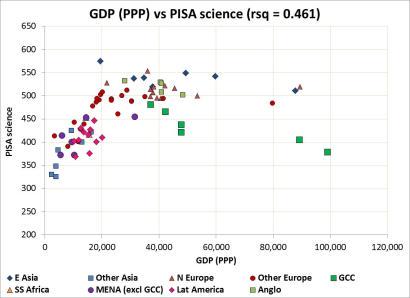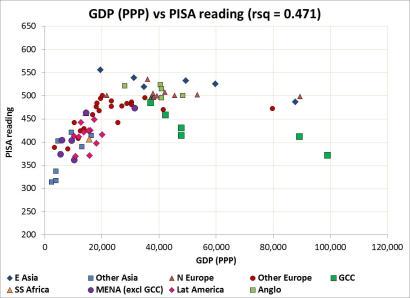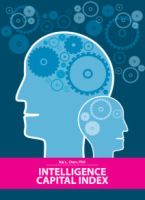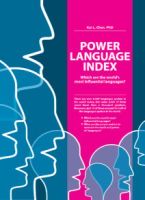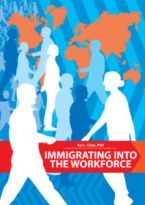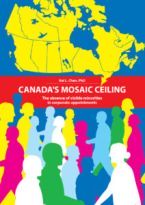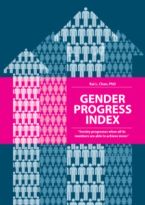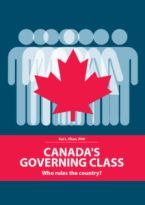
Education is the biggest driver of social mobility in modern societies, especially as the returns to higher education have increased sharply since the 1970s, coincident with a widening in income inequality, increased market deregulation and augmented international capital mobility — the former, it is argued by some, is a consequence of the latter two. (See, e.g. Krueger & Lindhal (2001) on the returns to education. Krugman (2000) and Leamer (1996) have interesting and polaristic views on the cause of the increased returns to (human) capital. Krugman argues that technology is the main culprit, while Leamer takes the view that trade is the principal driver. Of more recent vintage is a take by Helpman et al (2013) on how trade favours the educated.)
Education spans many topics and is at the core of every nation’s strategic development. From pre-primary to higher education, there are a myriad of policy challenges. How education and learning are woven into a country’s social fabric are also a big determinant of the long-term prospects for a nation’s prosperity. For a holistic look at the challenges in education that occupy the thought of policy makers the WEF’s 2014 report, “Education and skills 2.0“, is a good starting point. (Disclaimer: I was a contributor to Chapter 11, “Pay it forward“, by Sami Mahroum and Elizabeth Scott.) In any case, education is just one component of the broader picture of human capital, which recognises the holistic development of human potential.
The debate between private versus publicly-funded education:
Before I entered Princeton University I was a product of the public schooling system in Canada. From kindergarten through my university years, I had always attended public schools (albeit that Trinity College in the University of Toronto has a very private-school aura about it owing to the old money and establishment roots of the school). I primarily attended inner city schools while in Toronto, some of which were not known for being academically oriented.
I have always been an advocate of a strong public schooling system, as I see this as a great leveller in life and a promoter of mixing in the population. Having children from different backgrounds interacting in school is especially important for a society that is highly heterogeneous in racial/ethnic and socio-economic backgrounds. Without a strong public schooling system — and given the natural tendency for humans to sort by race/ethnicity, religion and class — society will develop barriers across its various communities. Private schools tend to segregate along class or religion, and often amplify inequalities in society. Elite private institutions are often bastions of privilege and perpetuate unfair advantages in life. Nevertheless, as a product of one of the world’s most elite institution of higher learning, I also have a deep respect for how the Harvards and the Princetons of the world play a constructive role in society.
Nevertheless, the private-funding and for-profit school models, especially in the United States, have created an educational system where, de facto, higher education exacerbates inequality. (See, e.g. “College, the great unleveler.“) Even outside of the United States, although higher education is the surest ticket for helping the poor ascend the economic ladder, the limited access to higher education and its greater importance in society means that higher education (especially elite higher education) is the preserver of the elite.
The role of elite institutions of higher learning within society:
Concomitant with a rise in the returns to higher education has been a debate within societies on the role of elite institutions of higher learning as engines for social mobility. Most countries regulate admission into post-secondary schooling (especially at elite institutions) on the basis of academic merit. In the United States, however, non-academic factors may play a role in deciding who get into the top schools.
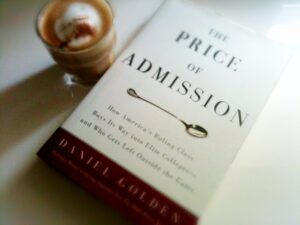
Good references on the topic of admissions into the Ivy League schools in the United States can be found in Jerome Karabel’s (2005) book, “The chosen: The history of admission and exclusion at Harvard, Yale, and Princeton”, as well as in Daniel Golden’s (2006) work, “The price of admission: How America’s ruling class buys its way into colleges — and who gets left outside the gates”. (I was interviewed by Mr Golden for a chapter in his book (“The New Jews”) and can be found in pages 206-207.) More recently, Espanshade & Radford (2009) released a book, “No longer separate; not yet equal: Race and class in elite college admissions and campus life.”
But even where the bar for admissions is set by academic merit alone, those that come from modest backgrounds will be at a significant disadvantage in the quest for admission into elite institutions. But increasingly it is the graduates of elite institutions who control the wealth within society, as well as the political framework of the nation, which ultimately decides which segments of society benefit from the political process. In the absence of an explicit mandate for institutions of higher learning to counter the innate biases of elite education it seems that elite institutions may perpetuate and exacerbates inequality. So the question to ponder is whether elite institutions should serve solely as incubators for the academically talented, or whether they should serve a greater social role, and if so, the extent to which they should be agitators for social mobility.
The debate on affirmative action in higher education (Work In Progress):
Affirmative action (AA) in higher education, as it is practiced in the United States, is a policy that allows race-based preference in admissions to colleges and universities. (In other countries, such as India, preference is given to persons of certain castes for education (and work opportunities)). In Canada, the Canadian Employment Equity Act calls for employers in federally-regulated sectors to give preferential treatment to women, people with disabilities, aboriginal persons, and visible minorities, but does not intervene in the matter of admissions to higher education.) American-style affirmative action was first introduced in the 1960s under President Kennedy. Since its inception in the USA (and elsewhere), affirmative action has been and continues to be a contentious issue.
Proponents of affirmative action typically cite the need to have a more balanced representation of marginalised or otherwise under-represented groups (race, colour, national origin, religion, sex, etc.) in the areas of education and employment. (Nevertheless, diversity in sports, media, and entertainment is often not included in most forms of affirmative action.)
Those opposed to affirmative point to its inherent unfairness, as it moves away from the ideals of meritocracy and invokes preferences based on group identification (often racial). However, one negative consequence of US-style affirmative action is that it may promotes students of lower ability into positions beyond their capabilities. Indeed, it is well documented that beneficiaries of affirmative action have a significantly higher rate of non-completion of their degrees, as well as lower academic standing relative to their peers who do not have the benefit of being favoured by affirmative action.
Signalling and masquerading:
Because of the preferences given by affirmative action to “traditionally underrepresented minorities” students looking for an edge in admissions may engage in activities to identify themselves in the process as part of the preferred group. Likewise, those who are negatively discriminated against may try to hide their identity. For example, a student with only tangential connection to a preferred group may try to claim membership into that group, and likewise negatively discriminated students may try to mask their identity in their applications. But even if applicants do not identify themselves as belonging to a group (e.g. via box-ticking in the application process), their group origin may be evident through their name (unless such data is filtered/masked) or in their resume or essay if they are part of the application materials.
Zero-sum game:
Admissions policy is a zero-sum game in that giving preference to one applicant necessarily means bias against another given the limited number of slots in admissions. That is, positive discrimination for one person necessarily implies negative discrimination for another. And this is one reason why making policies in this realm engender so much debate — that and the fact that it also often goes at the heart of identity politics and the ideals of meritocracy/privilege.
Standardised tests:
Admissions to higher education is often discriminated by the use of local, regional or national standardised tests on educational aptitude (e.g. China, France). In the United States, the most common standardised test (though not nationally administered as in China and France) is the SAT (Scholastic Assessment Test) administered by the College Board. (The ACT — American College Testing — is the leading alternative test in the USA.) In its present form (since 2005), the SAT tests aptitude in writing, mathematics and critical reading, with scores in each factor ranging from 200 to 800 in 10-point increments, for a range in the total score from 600 to 2400. Prior to 2005, the SAT covered just critical reading and mathematics for a maximum total score of 1600.
Performance on the SAT is highly correlated with socioeconomic status (e.g. household income) and race. The below charts show the correlations between race/ethnicity vs SAT scores, and household income vs SAT scores. Unfortunately, there are no reliable sources on the interaction of race and income vs SAT scores (likely due to its sensitive and political nature), although it appears that income is a positive factor for all groups and does not eliminate the gap across the racial groups.
The most comprehensive study of the role of SAT scores and affirmative action in admissions to elite US universities is by Chung, Espanshade and Walling (2004) of Princeton University. They look at the SAT scores 124,374 students matriculating into three elite American universities* in the 1980s and 1990s and examined the profiles of students by minority status, as well as whether they are athletes or legacies. They find that belonging to one of these groups — with the exception of being Asian — is associated with an implicit “bonus” on their SAT score, relative to white admitted students (with no athlete or legacy attachment). The below summarises the implicit bonus (out of 1600) that each group receives:
- White: 0 (base case)
- Asian: -50
- Black: +230
- Hispanic: +185
- Athlete: +200
- Legacy: +160
That is, at elite US institutions black students had SAT scores 230 points lower (on average) than white students, while Hispanic students had an average SAT score 185 points lower than white students. For athletes and legacies the gaps are 200 and 160 points, respectively. Asians are actually penalised and must score 50 points higher than white students to have the same probability of being admitted. Unfortunately, no such data exist for Jewish students, who typically comprise 25 percent of the population at elite American universities (though with considerable variation) and are often the majority of the white group. This would suggest one of the following scenarios (if the proportion of whites and Jews who are non-athlete and non-legacy are similar):
- J<W<A: Jewish students are admitted with lower SAT scores than other whites and so the Asian-white (non-Jewish) gap is less than 50 and the Asian-Jewish gap is greater than 50
- J=W<A: Jewish students are admitted with similar SAT scores to non-Jewish whites, which implies that Jews and non-Jewish whites both have a gap of 50 relative to Asians
- W<J=A: Jewish students are admitted with similar SAT scores to Asians, which implies that the Asian-white (non-Jewish) gap is close to 100 points
- W<A<J: Jewish students are admitted with higher SAT scores than Asians, which implies that the Asian-white (non-Jewish) gap is greater than 100 points
(Credible data on SAT scores by Jewish students is not readily available. Nevertheless, data from Espanshade et al. show that some 40 percent of slots at elite schools are taken by athletes and legacies, and that the overall Asian-white gap (inclusive of these “preferred” admitted groups) is 140 points.)
In a follow-up article, Espanshade and Chung (2005) show that eliminating preferences for under-represented minorities, athletes and legacies would result in a class composition that would be highly different in its ethnic composition:
“[E]liminating affirmative action would reduce acceptance rates for African-American and Hispanic applicants by as much as one-half to two-thirds and have an equivalent impact on the proportion of underrepresented minority students in the admitted class. White applicants would benefit very little by removing racial and ethnic preferences; the white acceptance rate would increase by roughly 0.5 percentage points. Asian applicants would gain the most. They would occupy four out of every five seats created by accepting fewer African-American and Hispanic students. The acceptance rate for Asian applicants would rise by one-third from nearly 18 percent to more than 23 percent.”
The above phenomenon was witnessed in California after it passed Proposition 209 (a.k.a. “Prop 209”) in 1996, which outlawed the use of race as a criterion of admission at UC universities. In the aftermath of that law, the number of Asian students in the UC system increased from 36.6% to 40.2% (1996 vs 2013); under-represented minority enrolment initially fell but has nonetheless rebounded. Indeed, immediately after Prop 209 the Asian enrolment jumped even higher than 40 percent and because of the strong desire of the UC Regents to maintain a level of racial diversity, they have used other means to try to elevate the number of under-represented minorities. Of note was the use of hardship as an additional criterion in evaluating student applications. Nevertheless, it actually skewed admissions more in favour of Asian students as many came from poor, immigrant (and non-English-speaking) families. Because this change did not engender a mix more favourable to under-represented minorities it was subsequently dropped in favour of other “holistic” factors that have better worked as proxies for underrepresented minorities.
The traditional argument against standardised tests as a means of winnowing students for admissions into higher education is that it is only a measure of test-taking ability, rather than scholastic aptitude and that such tests are one-dimensional with a focus on academics. Nevertheless, studies suggests (e.g. “Predicting success in college: SAT studies of classes graduating since 1980” (Burton & Ramist, 2001)) that SAT scores are the single best predictor for success at college (as measured by graduation rates), as well as professional success after college/university (as measured by income). However, a more recent study (Hiss & Hawkins, 2014) suggests that high school performance (i.e. GPA) is a more robust predictor than SAT (or ACT) scores. A shortcoming of the Hiss & Hawkin research, however, is that they examine a sample of 33 colleges with “test optional admissions policies” which may bias their finding.
Meritocracy and university admissions:
Ron Unz (2012) argues in an article in The American Conservative (“The myth of American meritocracy“) that the current system of admissions into the Ivy League (and peer) schools is non-meritocratic. Indeed, the process is opaque and as Unz argues, allows “the ethnicity of the student body to be shaped as desired”. This was in reference to admissions policies at Harvard, Princeton and Yale (“HPY”) that allowed them to suppress Jewish enrolment in the early 20th century (and maintain the status quo on northeastern Anglo-Saxon elites). This point is made by Mr Unz that the same phenomenon is taking place with Asian Americans and that the discrimination follows as a result of low level of political power by that group. Although there are definitely arguments that merit is not equivalent to standardised test scores, and that having a racially diverse student body has merits, the system is opaque and without accountability.
Higher education admission and ethnicity/culture:
The strong performance of students of Asian heritage is not limited to just the United States. Indeed, in Canada and elsewhere Asian students make up a significant share of the student population at selective universities, often in higher proportion than their general population. (The same is also true of Jeiwsh students, though data on this stratification is harder to attain and the conversation perhaps (unfortunately) taboo.) Perhaps owing to their high visibility it has created some tension or at least attention:
- Macleans (a Canadian weekly) came out with a provocative piece on race and higher education: ‘Too Asian’? Some frosh don’t want to study at an ‘Asian’ university. The article has since been renamed by the editors: ‘Too Asian’? Worries that efforts in the US to limit enrollment of Asian students in top universities may migrate to Canada.” The controversy over this article made the editors change the title again, this time to: “The enrollment controversy. Worries that efforts in the US to limit enrollment of Asian students in top universities may migrate to Canada.”
Below are articles on the matter of affirmative action in higher education in the United States, especially as they apply to elite institutions:
- Time to scrap affirmative action (The Economist)
- The myth of American meritocracy (The American Conservative)
Economic-based affirmative action:
Instead of giving preferential treatment based on race, some argue that economic-based affirmative action is more effective (means tested) and fair. Indeed, one of the big criticisms of affirmative action is that it benefits privileged under-represented minorities, often at the expense of poor white and Asian students. Just xx percent of the class body of elite institutions coming from the lowest income quintile, and just yy percent from the bottom decile of household income.
Legacy admissions and athletic recruitment as forms of affirmative action:
In the United States, admissions to higher education institutions may also involves athletic recruitment and legacy status. As the Espanshade et al. (2005) study shows, recruited athlete or legacy status has the equivalent of a “bonus” of 200 and 160 points (out of 1600), respectively, on the SAT. Depending on the sport, athletic recruitment may have implications for race and gender (e.g. American football has a large share of blacks; lacrosse and crew are predominantly white; soccer is primarily female sport in US collegiate athletics; etc.). Legacy admissions, on the other hand, are predominantly white. However, with the recent surge in the number of Jewish alums of elite universities (and increasingly Asians), the ethnic/racial composition of legacy status students is changing.
According to Harvard researcher Michael Hurwitz (2011), legacy status applicants have a 45 percent chance better chance of admission over non-legacy status applicants (of otherwise equal status). Proponents of legacy admissions argue that the practice allows schools to build a stronger connection with its alumni and generate higher donations, which can then be used to further its other objectives — including social mobility and access goals.
The access debate surrounding higher education (WIP):
Increasingly there is a debate about the accessibility of higher education. In particular, as the cost of higher education grows — outpacing inflation and rivalling the healthcare industry’s rapid inflation (see chart below) — the prospect of higher education is becoming less affordable, all the while the importance of higher education has grown (both in the returns to education and the prevalence of higher education). Consequently, this has resulted in a phenomenon whereby student loan debt in the United States (at over $1 trillion) now exceeds total credit card debt.
Given the assumed positive externalities of higher education, as well as intertemporal budget constraints faced by young people, there are valid arguments that higher education should be supported by the government. But what the fair share between private and public funding for higher education is a contentious issue. Some countries
Higher education as an engine for social mobility (WIP):
One of the positive attributes of higher education is its role in being a driver of social mobility, as measured by intergenerational income mobility. That is, the surest way to ascend the income ladder (on an intergenerational basis) is through higher education. However, as it becomes ever increasingly more difficult for persons from modest backgrounds to gain admissions into elite institutions, higher education has in fact become a tool for perpetuating and exacerbating inequality. Few students entering elite universities come from the lower socio-economic strata. Indeed, only xx per cent of Harvard’s undergraduate class come from the USA’s lowest bottom quintile. Of course, there are obvious reasons why the affluent are likely to have a much higher placement at places such as Harvard, Princeton and Yale, but if a nation’s leaders are drawn from elite schools, then such biases will skew the leadership to favour policies (either by design or unconsciously) that ignore the needs of the less affluent.
Higher education is an engine for social mobility in that it is the channel by which to climb the socioeconomic ladder. However, higher education has a tendency to amplify and perpetuate inequality as elite schools are increasingly a bastion for the privileged.
The role of education in development (WIP):
The latter half of the twentieth century saw the industrialisation of the East Asian economies (Hong Kong, Japan, Singapore, South Korea, Taiwan). These countries also place high priority on education and are amongst the global leaders in international standardised tests (e.g. PISA).
Eric Hanushek and Paul Peterson argue in a WSJ op-ed that scholastic aptitude (as proxied by performance on PISA) are direct drivers of economic growth: “The vital link of education and prosperity.” Their arguments are based on the findings of their own work () which they claim demonstrate a direct link between scholastic performance and economic growth. Principally, countries that have been able to excel academically (as evidenced by PISA) have enjoyed superior growth, while countries that have lagged in education have underperformed.
The importance of STEM education and national competitiveness (WIP):
It is a universal goal for advanced economies in promoting their innovative sectors, with a particular focus on research and development (R&D). Education in science, technology, engineering and mathematics (STEM) is key in the development of a knowledge-based economy. The Noridc countries (Finland, Sweden, Denmark, etc.) also have a
International standardised tests (WIP):
The OECD’s Programme for International Student Assessment (PISA) is the most comprehensive international standardised test. It covers three disciplines — mathematics, reading and science — and assesses the performance of 15-year-old students in OECD and non-OECD countries. In their most recent assessment (2009+), over 78 jurisdictions (in some cases, cities or regions of a country were covered in addition or in lieu of a country) were covered. The results are shown below as a function of per capita GDP (PPP) grouped by geographic region.
Income explains a large part of the variation of scores across countries with r-square values in excess of 0.450 for all three disciplines. (The reported r-square values are for the log-linear relationships.) However, it is also quite clear that geographic region (and whatever that proxies, including culture, language, religion, etc.) is also important in explaining the cross-country variation in scores.
The SAT, GMAT, GRE and LSAT and are standardised tests used in admissions for higher education in the United States. The performance on these test based on income and race are below. Note that GRE scores after 2011 are scaled from 130 to 170 but that the numbers presented below range from 200 to 800. A table of conversions between the two scaling systems can be found here.
Education and knowledge outcomes by geography/culture: (WIP)
Outcomes for education and general aptitude vary widely around the world. Although income explains a significant component of the cross-country variation (ignoring the two-way relationship between the variables), it seems that geography/culture is
Converting education capital (WIP):
Education is not the sole driver of success in life. How success is defined is also very subjective, although (unfortunately) success is often measured in lifetime earnings. (Is an individual who earns a lot of money but is without friends or loved ones successful? Likewise, .) Just by the metric of
A notable example of the challenges of converting raw intellectual capital into more tangible human/output capital is that offered by Malcolm Gladwell (2010) in his novel, “Outliers”. There, he illustrates the point by juxtaposing the outcomes of Christopher Langan (IQ 195) against J. Robert Oppenheimer (lead scientist at the Manhattan Project).
Education and employment (WIP):
Youth unemployment is always a challenge for societies as young people often struggle to transition into the workforce. The prospect of a bad progression to the working stage of life has far-reaching implications, especially as academic evidence (e.g. xxx) has shown that youth who enter the labour market at downturns in the business cycle are plagued by a persistent earnings gap relative to their peers who enter the workforce during positive parts of the economic cycle. Moreover, there are many reasons to believe that the current conditions are even more detrimental to youth than before.
Youth unemployment in the Eurozone and the Arab world are currently at high levels and the prospects for an amelioration of the problem is either uncertain or unlikely without fundamental shifts in culture, politics and policy. In both the Eurozone and the Arab world, youth unemployment hovers at around 25 percent. For the former it is hoped that the high level is a transitory byproduct of a severe recession (“Education to employment: Getting Europe’s youth to work” (MGI, 2014)), while in the Arab world the problem appears to be of a more structural nature with an expected 100 million Arab youth about to enter the labour market with no commiserate number of jobs awaiting them (“Addressing the 100 million youth challenge” (WEF, 2012); or see the IMF’s take on the youth demographic challenge of the Arab world: Youth unemployment in the MENA region.) In either case, there is a risk of a lost generation of young people who fail to develop their labour capital.
* Unfortunately, universities are very guarded about such data and I myself have been rebuffed in many attempts to access admissions data at elite universities. What data that are available suggest that there is, either implicit or explicit, some de facto racial quota or target at these schools.
References:
- Bloom, David E., Alya Goksel, Jody Heymann, Yoko Ishikura, Brij Kothari, Patricia Milligan and Chip Paucek, eds. (2014). “Education and skills 2.0: New targets and innovative approaches.” World Economic Forum (Geneva).
- Burton, Nancy W. & Leonard Ramist (2001). “Predicting success in collge: SAT studies of claases graduating since 1980.” College Board Research Report No. 2001-2.
- TJ Espenshade & CY Chung (2005). “The opportunity cost of admission preferences at elite universities.” Social Science Quarterly, June 2005, 86(2): 293-305.
- TJ Espenshade, CY Chung, and JL Walling (2004). “Admission preferences for minority students, athletes, and legacies at elite universities.” Social Science Quarterly, December 2004, 85(5): 1422-1446.
- Hanushek, Eric A. & Paul Peterson (2013). “The vital link of education and prosperity.” Wall Street Journal (11 September 2013).
- Hiss, William C. & Valerie W. Franks (2014). “Defining promise: Optional standardised testing policies in American college and university admissions.” National Association for College Admission Counselling Working Paper 2/5/2014.
- Michael Hurwitz (2011). “The impact of legacy status on undergraduate admissions at elite colleges and universities.” Economics of Education Review, 2011, Volume 30, Issue 3: 480-92.
- Paul R. Krugman (2000). “Technology, trade and factor prices.” Journal of International Economics, February 2000, 50(1): 51-71.
- Krueger, Alan B. & Mikael Lindahl (2001). “Education for growth: Why and for whom?” Journal of Economic Literature, December 2001, XXXIX: 1101-36.
- Edward E. Leamer (1996). “In search of Stolper-Samuelson effects on US wages.” NBER WP 5427, January 1996.
- Mettler, Suzanne (2014). “College, the great unleveler.” New York Times (1 March 2014).
- Unz, Ron (2012). “The myth of American meritocracy.” The American Conservative, December 2012: 14-51.

